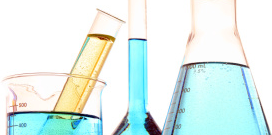Usually, the complex of external physical, chemical, and biotic factors that may affect a population, an organism, or the expression of an organism's genes; more generally, anything external to the object of interest (e.g., a gene, an organism, a population) that may influence its function or activity. Thus, other genes within an organism may be part of a gene's environment, or other individuals in a population may be part of an organism's environment.
© 2005 by Sinauer Associates, Inc. All rights reserved. Futuyma, D. Evolution.



